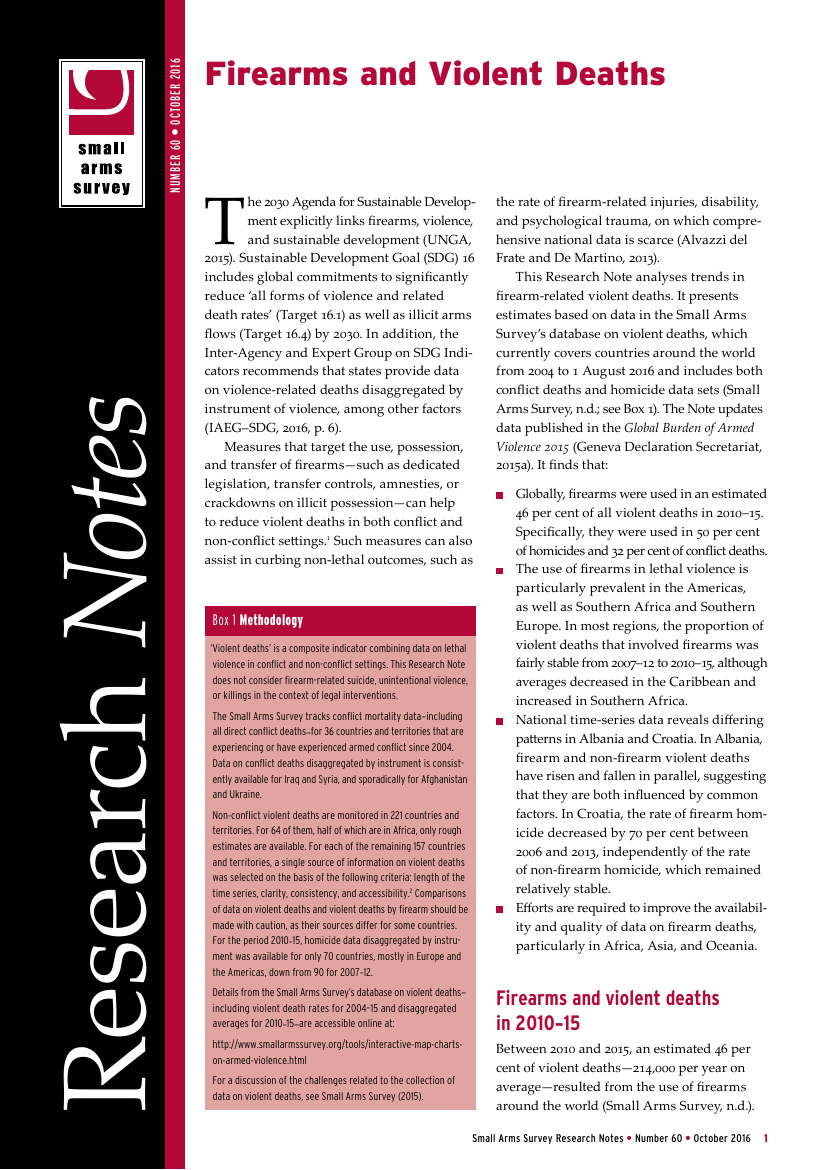
Firearms and Violent Deaths (Research Note 60)
In the framework of the 2030 Agenda for Sustainable Development, the Small Arms Survey has launched Firearms and Violent Deaths, the second in a series of three reports designed to support global efforts to reach targets under Sustainable Development Goal 16 (SDG16). The 2030 Agenda explicitly links arms, violence, and sustainable development, while SDG16 includes global commitments to significantly reduce ‘all forms of violence and related death rates’ (Target 16.1) as well as illicit arms flows (Target 16.4) by 2030.
The report analyses trends in firearm-related violent deaths in both conflict and non-conflict situations. To promote the sharing of information and encourage collaboration in this context, the Survey is also providing online access to its updated database on violent deaths and corresponding interactive maps.
Key findings of this report include the following:
- Globally, firearms were used in an estimated 46 per cent of all violent deaths in 2010–15 – resulting in an average of 214,000 deaths per year. Specifically, they were used in 50 per cent of homicides and 32 per cent of conflict deaths.
- The use of firearms in lethal violence is particularly prevalent in the Americas, as well as Southern Africa and Southern Europe. In most regions, the proportion of violent deaths that involved firearms was fairly stable from 2007–12 to 2010–15, although averages decreased in the Caribbean and increased in Southern Africa.
- National time-series data reveals differing patterns in Albania and Croatia. In Albania, firearm and non-firearm violent deaths have risen and fallen in parallel, suggesting that they are both influenced by common factors. In Croatia, the rate of firearm homicide decreased by 70 per cent between 2006 and 2013, independently of the rate of non-firearm homicide, which remained relatively stable.
- Efforts are required to improve the availability and quality of data on firearm deaths, particularly in Africa, Asia, and Oceania.
The analysis relies on data from the Small Arms Survey’s database on violent deaths. The data—which includes figures on firearm homicides and female homicide victims—extends through the end of 2015 or the latest available year. The updated database on violent deaths can be consulted here.
Have your say about Small Arms Survey publications and products: take 5 minutes to fill out our questionnaire.